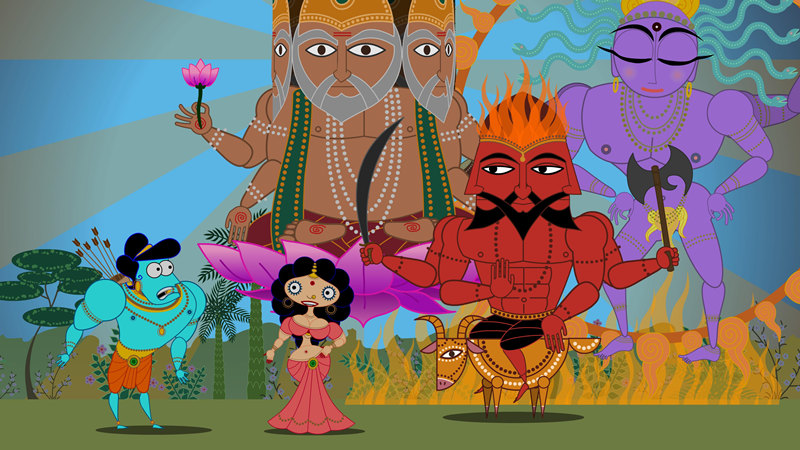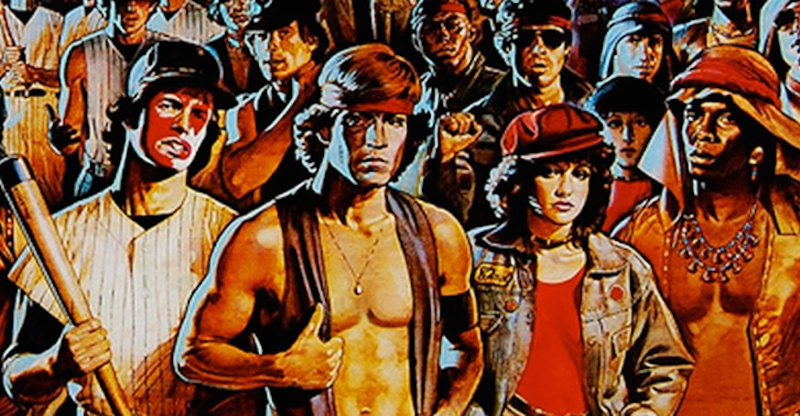Five animated Disney features come to Blu-ray on August 21, with the most high-profile being “Pocahontas,” which is being marketed in a 2-Movie Collection along with the direct-to-video sequel, “Pocahontas II: Journey to a New World.” One Blu-ray disc holds both films, while two DVDs contain copies of each.
“Pocahontas”
Disney animated features have always had serious moments, but “Pocahontas” marked the first time that the studio produced a film with a predominantly serious tone and an un-happily-ever-after ending. Not coincidentally, it was also the first time the studio created a film that was based on an actual historical figure, which accounts for the unusual reverence. The studio tried hard to get this right. They did their research, they hired mostly Native American actors to do the voices, they had Native American consultants and a session with a real shaman, and they tried to depict all facets of Powhatan life—especially the core beliefs. And they still got complaints.
It turns out that when the real Pocahontas threw herself on top of Captain John Smith to keep her father from executing him, she was only 12—not the older, voluptuous siren that appears in this animated feature. But you can’t fault Disney. It’s doubtful that American audiences would have warmed to a platonic relationship between a 27 year old and a little girl. Besides, Disney has a long tradition of modeling their characters after the actors handling the voiceovers, and when Native American actress Irene Bedard (“Smoke Signals”) appears on a “making of” special, it’s easy to see the physical resemblance.
Disney used an earlier 10th Anniversary Special Edition release as an occasion to put criticism to rest. American Indian activist-actor Russell Means (“The Last of the Mohicans”) proclaimed it the best treatment of American Indians Hollywood has ever produced. Means plays Chief Powhatan, Pocahontas’ father, with powerful grace and dignity, while Bedard manages to make the mysterious historical figure her own, despite having to compete with “the hair” (more on that later). Little is known about the actual Pocahontas except that she had a two-year relationship with Smith, who landed in Jamestown in 1607 with 103 colonists. Pocahontas married an Indian chief after Smith returned to England, though she would subsequently meet and marry John Rolfe, another Englishman, and die in London of smallpox as she was trying to raise funds for the colonists. The film covers the period between the arrival of the gold-seeking colonists’ and Smith’s leaving.
Because directors Mike Gabriel and Eric Goldberg stayed fairly close to the sketchy history, the plot is as bare bones as you’ll find in an animated feature, with much of the emphasis falling on the adult relationship between Pocahontas and Smith (Mel Gibson|). The paucity of plot is thankfully balanced by some of the most successful animal comic relief to come out of a Disney studio. These are not Snow White’s animal friends. Meeko, a tag-along raccoon with a voracious appetite, plays like a silent-film comedian, as does Flit, the little hummingbird second banana who’s Pocahontas’ self-appointed protector. Meeko takes delight in tormenting Percy, the pampered pug of Gov. Ratcliffe (David Ogden Stiers)—also a departure for Disney, because, as animators explain, the Governor wasn’t the usual embodiment of evil. He had to represent greed and prejudice in this symbol-heavy film, which offers a mostly dark palette throughout.
Composer Alan Menken kept his streak alive with “Pocahontas,” winning Academy Awards for Best Song and Score, just as he did for “The Little Mermaid,” “Beauty and the Beast,” and “Aladdin.” The award-winning “Colors of the Wind,” sung by Judy Kuhn and with lyrics by Stephen Schwartz, formed the heart of the film that guided directors and animators. It inspired the biggest use of symbolism, where colored leaves representing her mother’s spirit frequently swirl around the heroine’s constantly blowing hair.
Unfortunately, aside from the simple plot, the use (or overuse) of this device is the biggest liability, because it creates an idealized portrait of Pocahontas that couldn’t be more romanticized if it had been created by Rousseau. It can be annoying, too, watching that hair constantly blowing, as if she were a model at a photo shoot. Yet, bonus features reinforce that the directors did the best they could with the material and made all the right choices. Early animated sequences show how much more cartoon-like the characters were drawn, while an early talking turkey was replaced (thankfully) by the irreverent raccoon. “Pocahontas” may not be one of Disney’s all-time classics, but it’s still solid entertainment. Movie Met’s John J. Puccio called it “a touching tribute to the power of loyalty, courage, cooperation, and, more than anything else, sympathetic understanding.”
Parents be warned, though, that despite the G rating there are three shootings—one to an Indian’s leg, another depicting the bloodless on-camera killing of Kocoum, and the third a wounding that comes at the film’s climax. Oh, yeah. And then there’s that famous moment where Pocahontas saves Smith from the executioner’s stone club.
“Pocahontas” rates a solid 7 out of 10.
“Pocahontas II: Journey to a New World”
As dark a palette as the first film relied upon, the sequel is considerably brighter—perhaps to match the wonder in Pocahontas’ eyes as she witnesses marvelous new things after leaving her homeland. Or maybe it’s just because the artwork and backgrounds come closer to the look of TV animation. Disney’s direct-to-video sequels have been hit or miss, and this one falls somewhere in the middle.
Historically, it’s not as accurate as the original, and the emotional trajectory can seem confusing to youngsters who may wonder why Pocahontas and John Smith, presented as being so much in love in the first film, could end up as they do here—with Smith out of the picture and Pocahontas falling for John Rolfe (Billy Zane), who was sent by King James to smooth over relations between the settlers and Indians. But then Smith comes back into the picture again, creating a classic triangle, when in reality there was none. Unfortunately, that trumped-up triangle is what’s most confusing about a film that could have been so much better.
Irene Bedard returns as the voice of Pocahontas, though Mel Gibson’s younger brother Donal stands in for him as John Smith. Other key players are back, thankfully. Linda Hunt reprises her role as Grandmother Willow, with David Ogden Stiers still playing the unscrupulous Governor Ratcliffe and Means the noble Powhatan.
In this Disney version, Pocahontas volunteers to go to England as an emissary in order to prevent war between her people and the Brits. In reality, Pocahontas was taken prisoner and paraded through London society in order to entice new settlers to make the adventurous voyage to Jamestown and reinforce the settlement. The real John Smith had been sent to England earlier to recover from accidental gunpowder wounds, not from wounds sustained in armed conflict. Plus, inexplicably, Disney kills off one warrior who in fact lived to marry Pocahontas before she married again, to Rolfe. In other words, it’s a murky and complicated bit of American folklore that’s tough enough for historians to sort out, but an even bigger challenge for filmmakers who are trying to find a simplified storyline that will play to audiences.
The animation in this sequel is pretty good for direct-to-video, despite the TV look, and Pocahontas’ sidekick animals are as entertaining as before. But the fish-out-of-water theme (with Pocahontas trying to impress the king by showing how “civilized” she is) and the story and screenplay just aren’t as strong as they were in the original. Then again, that’s often the case with sequels.
“Pocahontas II” merits a 6 out of 10. It’s better than a lot of the direct-to-video entries, but still pretty average as animated films go. It runs only 73 minutes, eight minutes shorter than the original. The movie is hard to find on this disc, though. I expected a menu screen that showed both films, but that doesn’t happen unless you press the arrow key when you’re on “Play Movie.” Then, finally, you get the option to play the second film. Otherwise, if you just press enter on “Play Movie” you get “Pocahontas.”
Video:
Both films are presented in 1.78:1 aspect ratio and “enhanced” for 16×9 screens, and the AVC/MPEG-4 transfers on each appear to be accurate. As I said, “Pocahontas” has always had a dark palette, and it remains so. But the level of detail is improved in 1080p, and this is something you notice especially in close-ups and in scenes involving Meeko, which, because they’re played for comic relief, are also brighter. “Pocahontas II” has that slightly overlit look that TV animation has, not quite as deep as and rich-toned as the original film.
Audio:
The audio for both is an English DTS-HD MA 5.1, with additional audio options in French and Spanish Dolby Digital 5.1 and subtitles in English SDH, French and Spanish. When the songs kick in the audio is especially robust, and there’s just enough rear-speaker involvement to create a sense of a larger space. Dialogue is clear and unfettered, and the mix of music and effects and speech is nicely balanced. In short, it’s a typical Disney first-rate soundtrack.
Extras:
This Blu-ray comes with an all-new feature, “Drawing Inspiration: The Lost Story of Hiawatha,” which traces the development to storyboards for an early film that’s presented in full here by co-director Eric Goldberg and animation historian Charles Solomon. Everything else appears to be recycled from previous DVD releases, including “The Music of Pocahontas,” a seven-minute featurette that touches on the Menken/Schwartz collaboration. Then there’s the deleted song “If I Never Knew You,” presented with optional commentary by the directors and producer James Pentecost, the same audio commentary with the same three guys as on the 10th Anniversary DVD, the same two handsful of deleted scenes, a politically incorrect “Little Hiawatha” cartoon short, and the rest of the previously released bonus features available through “Virtual Vault,” via online streaming.
Bottom line:
“Pocahontas” isn’t an A-movie in the Disney catalog, but it’s a solid second-tier film that, despite its romanticizing of the “noble savage,” nonetheless features themes that are wholesome and consistent with Disney’s messaging. And “Pocahontas II,” though not as accomplished, is still a nice bonus feature.


